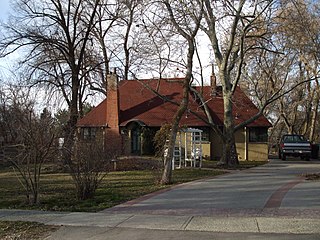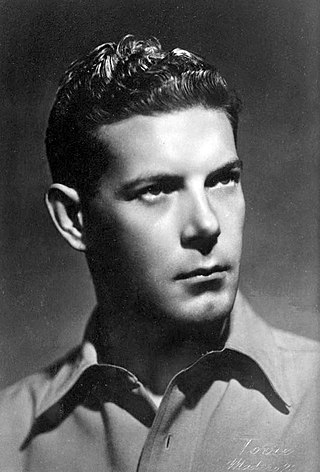
The Corcoran Gallery of Art is a former art museum in Washington, D.C., that is now the location of the Corcoran School of the Arts and Design, a part of the George Washington University.

Mahonri Mackintosh Young was an American social-realist sculptor and artist. During his lengthy career, he created more than 320 sculptures, 590 oil paintings, 5,500 watercolors, 2,600 prints, and thousands of drawings. However, he is primarily recognized for his sculpture. His work includes landscapes, portraits, busts, life-size sculptures, monuments, and engravings. Regardless of his medium of choice, his work is characterized by spontaneity; he often preferred to prepare his work with quick sketches on the scene. He felt this made his work more natural as compared to using a model in the studio. He was fairly commercially successful during his life, though he did not find success until his mid-30s. Large commissions for sculptures from the Church of Jesus Christ of Latter-day Saints were particularly lucrative for him.

Cyrus Edwin Dallin was an American sculptor best known for his depictions of Native Americans. He created more than 260 works, including the Equestrian Statue of Paul Revere in Boston; the Angel Moroni atop Salt Lake Temple in Salt Lake City; and Appeal to the Great Spirit (1908), at the Museum of Fine Arts, Boston. He was also an accomplished painter and an Olympic archer.

Appeal to the Great Spirit is a 1908 equestrian statue by Cyrus Dallin, located in front of the Museum of Fine Arts, Boston. It portrays a Native American on horseback facing skyward, his arms spread wide in a spiritual request to the Great Spirit. It was the last of Dallin's four prominent sculptures of Indigenous people known as The Epic of the Indian, which also include A Signal of Peace (1890), The Medicine Man (1899), and Protest of the Sioux (1904).

LeConte Stewart was a Latter-day Saint artist primarily known for his landscapes of rural Utah. His media included oils, watercolors, pastel and charcoal, as well as etchings, linocuts, and lithographs. His home/studio in Kaysville, Utah is on the National Register of Historic Places.

Avard Tennyson Fairbanks was a 20th-century American sculptor. Over his eighty-year career, he sculpted over 100 public monuments and hundreds of artworks. Fairbanks is known for his religious-themed commissions for the Church of Jesus Christ of Latter-day Saints including the Three Witnesses, Tragedy of Winter Quarters, and several Angel Moroni sculptures on spires of the church's temples. Additionally, Fairbanks sculpted over a dozen Abraham Lincoln-themed sculptures and busts among which the most well-known reside in the U.S. Supreme Court Building and Ford's Theatre Museum.

John Hafen was a Swiss-born American artist, primarily of landscapes and portraits.

The Taylor-Dallin House is a historic house in Arlington, Massachusetts. The house is notable as being the home of sculptor Cyrus E. Dallin (1861–1944) from 1899 until his death. It is a Colonial Revival/Shingle style 2+1⁄2-story wood-frame structure, with a hip roof studded with dormers, and a front porch supported by Tuscan columns. The house was built c. 1898 by Jack Taylor and sold to Dallin in 1899. Dallin's studio, no longer extant, stood in the rear of the property. Dallin was one of Arlington's most well-known citizens of the early 20th century, and his sculptures are found in several public settings around the town.
Bryan Lamont Larsen Jr. is an American realist painter, born in Salt Lake City, Utah on February 12, 1975.

Springville is a city in Utah County, Utah, United States, that is part of the Provo–Orem metropolitan area. The population was 35,268 in 2020, according to the United States Census. Springville is a bedroom community for commuters who work in the Provo-Orem and Salt Lake City metropolitan areas. Other neighboring cities include Spanish Fork and Mapleton. Springville has the nickname of "Art City" or "Hobble Creek".

Ethel Geraldine Rockefeller Dodge was the youngest child of William Avery Rockefeller Jr. and Almira Geraldine (Goodsell) Rockefeller. Giralda Farms was the name given to the New Jersey country estate where the family lived. She was a great patron of the arts and parts of her collection became the object of a lawsuit following her death.

A Signal of Peace is an 1890 bronze equestrian sculpture by Cyrus Edwin Dallin located in Lincoln Park, Chicago. Dallin created the work while studying in Paris and based the figure on a member of Buffalo Bill's Wild West Show, which he attended often. He exhibited the original plaster version of the sculpture at the Paris Salon of 1890, where it won honorable mention.
Alberto Owen Treganza, sometimes known as Albert Treganza or A.O. Treganza, was an American architect and ornithologist in the early 20th century.

The Dallin House is a historic residence in Springville, Utah, United States. It was listed on the National Register of Historic Places in 1994.

The Cyrus Dallin Art Museum (CDAM) in Arlington, Massachusetts, United States is dedicated to displaying the artworks and documentation of American sculptor, educator, and Indigenous rights activist Cyrus Dallin, who lived and worked in the town for over 40 years. He is well known for his sculptural works around the US including The Scout in Kansas City, Missouri, TheSoldiers' and Sailors' Monumentin Syracuse, New York and The Signal of Peace in Chicago. Locally, he is best known for his iconic Appeal to the Great Spirit and Paul Revere Monument statues, both located in Boston.

Theodore Milton Wassmer was an American painter. Wassmer was interested in art at a young age, but decided to become an artist after attending the 1934 Chicago World's Fair. He supported his family throughout the Great Depression. Wassmer has studied under multiple teachers and studied the work of painters in museums. He served in the U.S. Army Air Corps during World War II. He has donated several of his paintings to several museums in Utah. He produced more than 2,000 works of art including paintings, watercolors, and sketches that are displayed in museums around the world. In his personal life, he married fellow artist Judy Farnsworth Lund in December 1945.

Protest of the Sioux, also known as The Protest, is a 1904 equestrian statue by Cyrus Dallin. It was the third of four important statues of indigenous people on horseback commonly known as The Epic of the Indian, which also includes A Signal of Peace (1890), The Medicine Man (1899), and Appeal to the Great Spirit (1908).
Mary Lou Romney, born Mary Louisa Stone, was an American Painter who resided in Utah. Romney studied art at the University of Utah where she earned a BFA and then completed a Post Graduate Education Certification program. She continued her education at Utah State University where she earned an MFA with a minor in Education. She was a nationally recognized painter and illustrator. She taught briefly at Utah State University, then spent many years teaching at the University of Utah, and was involved in local and regional art organizations, exhibits, and contests.


























